Abstract
Chemolithotrophic ammonium-oxidizing and nitrite-oxidizing bacteria including Nitrosomonas europaea, Nitrosococcus oceanus, Nitrobacter sp., Nitiospina gracilis, and Nitrococcus mobilis were examined as to their ability to oxidize methane in the absence of ammonium or nitrite. All ammonium oxidizers tested had the ability to oxidize significant amounts of methane to CO2 and incorporate various amounts into cellular components. None of the nitrite-oxidizing bacteria were capable of methane oxidation. The methane-oxidizing capabilities of Nitrosococcus oceanus and Nitrosomonas europaea were examined with respect to ammonium and methane concentrations, nitrogen source, and pH. The addition of ammonium stimulated both CO2 production and cellular incorporation of methane-carbon by both organisms. Less than 0.1 mM CH4 in solution inhibited the oxidation of ammonium by Nitrosococcus oceanus by 87%. Methane concentrations up to 1.0 mM had no inhibitory effects on ammonium oxidation by Nitrosomonas europaea. In the absence of NH4-N, Nitrosococcus oceanus achieved a maximum methane oxidation rate of 2.20 × 10−2 μmol of CH4 h−1 mg (dry weight) of cells−1, which remained constant as the methane concentration was increased. In the presence of NH4-N (10 ppm [10 μg/ml]), its maximum rate was 26.4 × 10−2 μmol of CH4 h−1 mg (dry weight) of cells−1 at a methane concentration of 1.19 × 10−2 mM. Increasing the methane concentration above this level decreased CO2 production, whereas cellular incorporation of methane-carbon continued to increase. Nitrosomonas europaea showed a linear response throughout the test range, with an activity of 196.0 × 10−2 μmol of CH4 h−1 mg (dry weight) of cells −1 at a methane concentration of 1.38 × 10−1 mM. Both nitrite and nitrate stimulated the oxidation of methane. The pH range was similar to that for ammonium oxidation, but the points of maximum activity were at lower values for the oxidation of methane.
Full text
PDF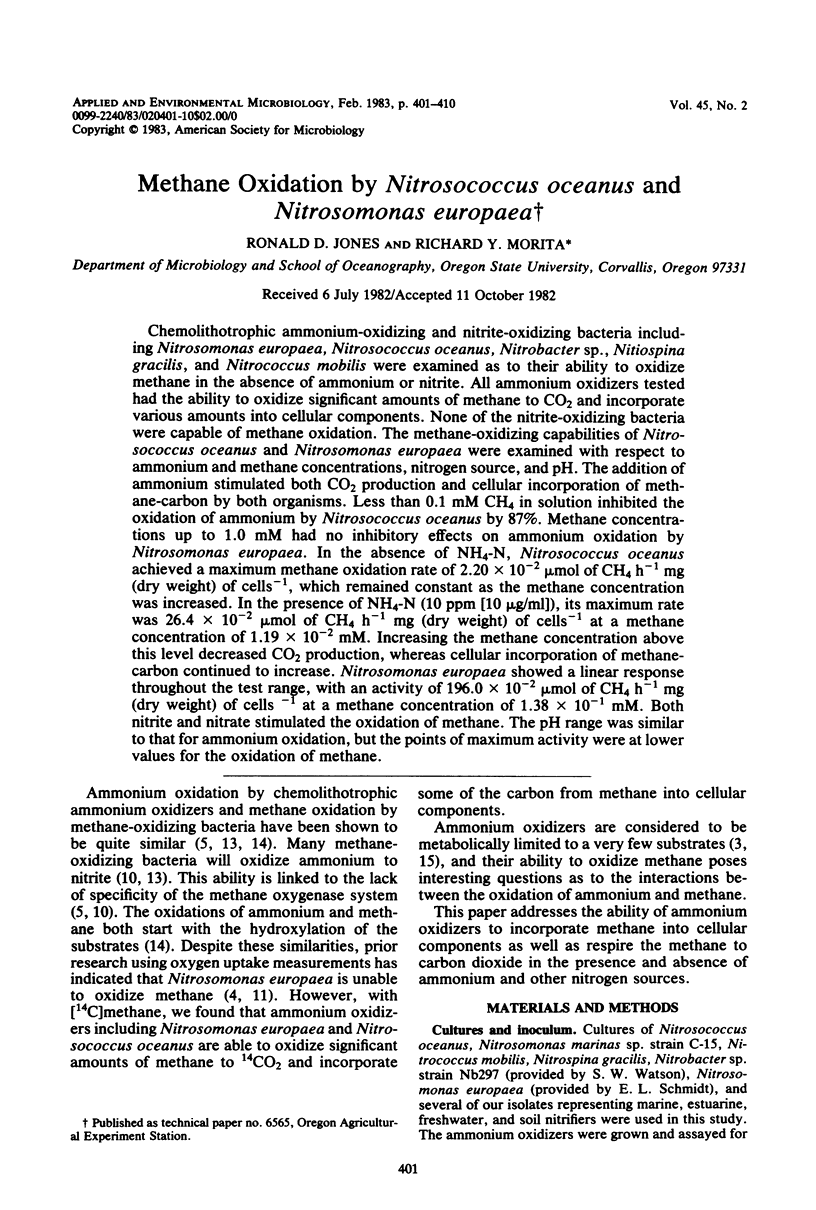
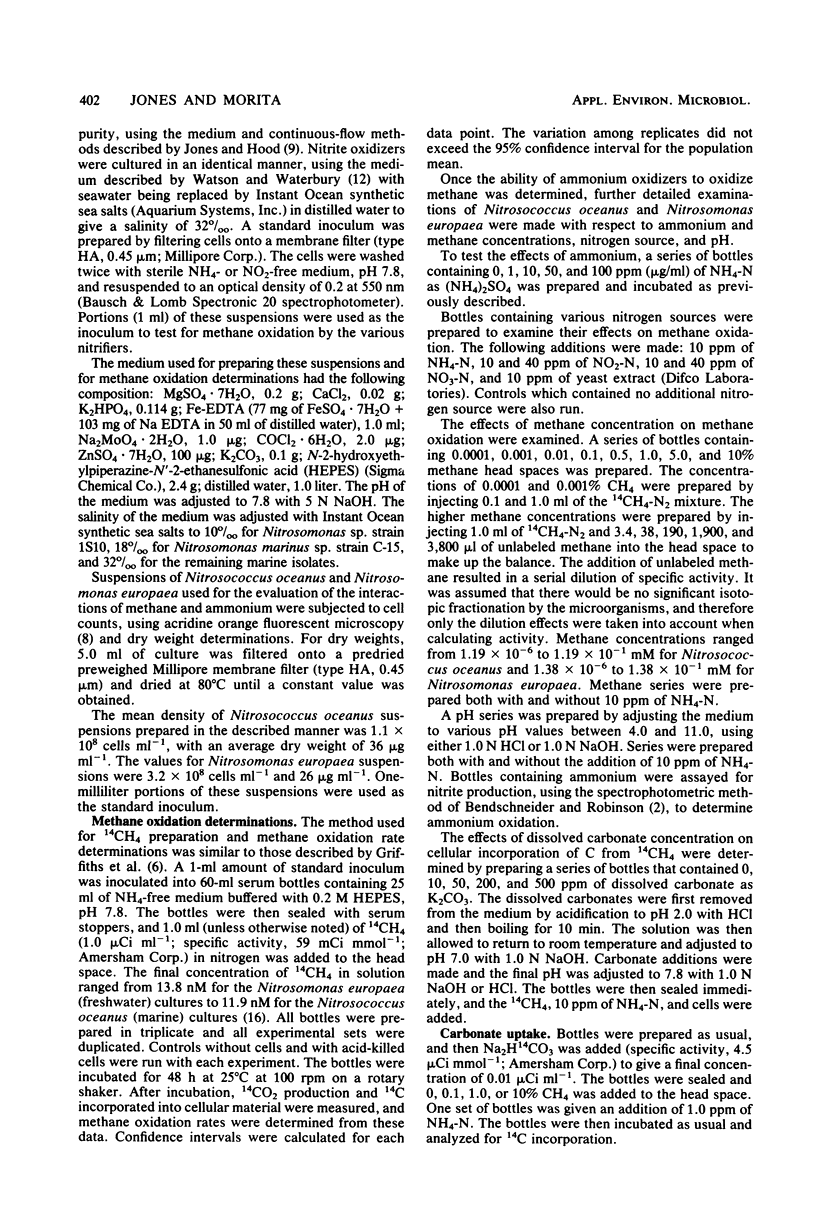
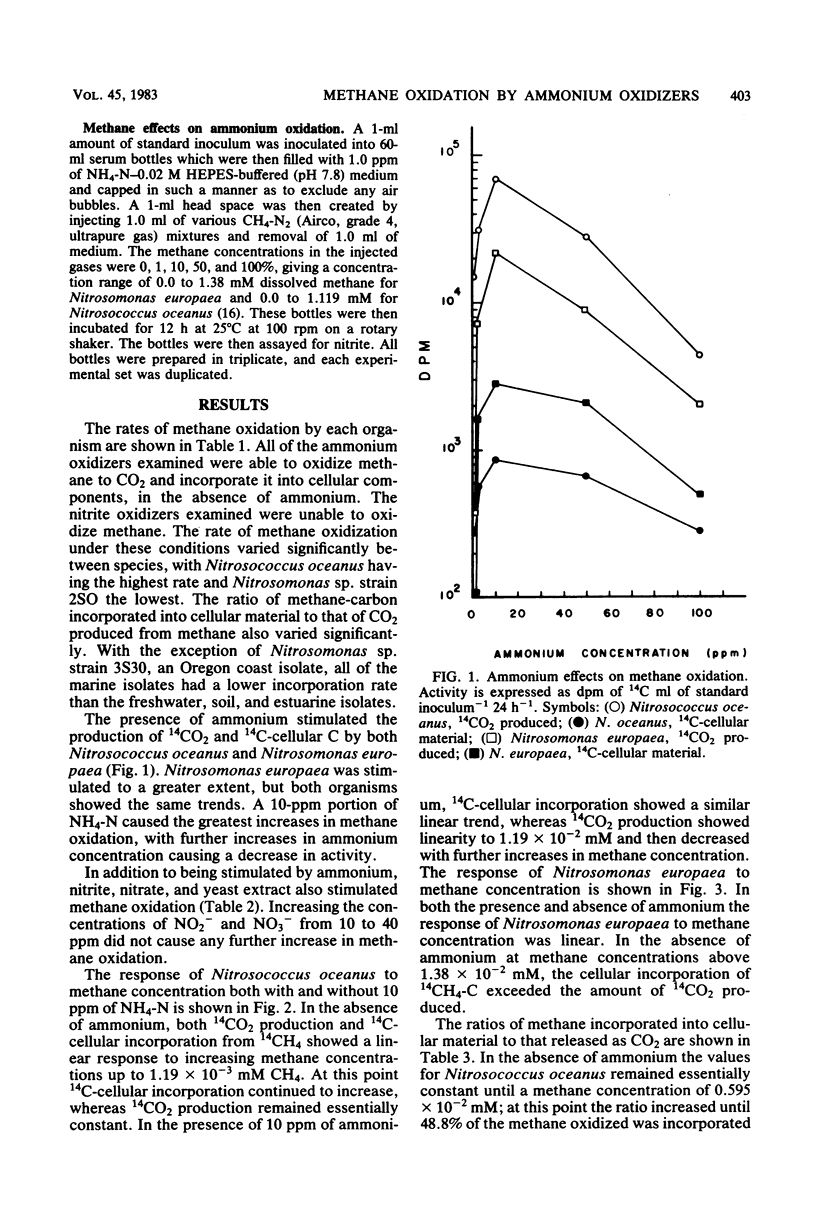
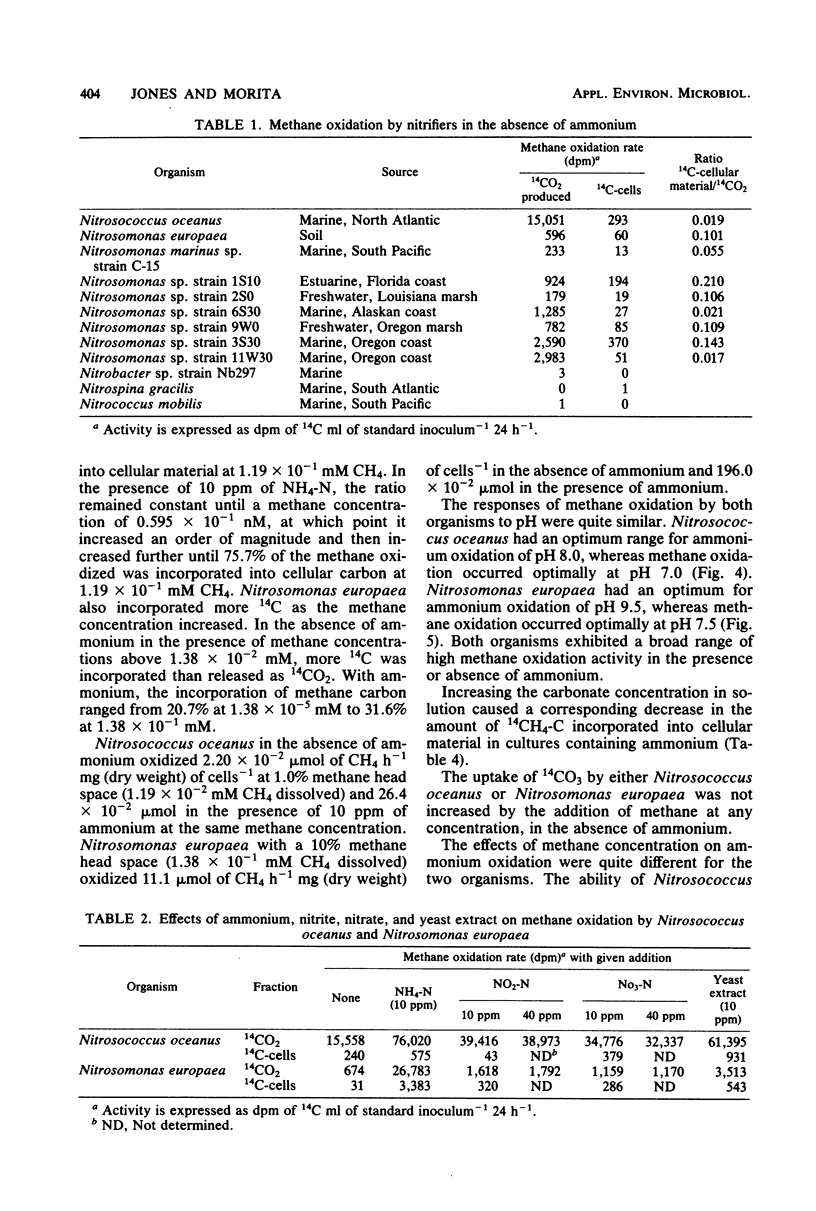
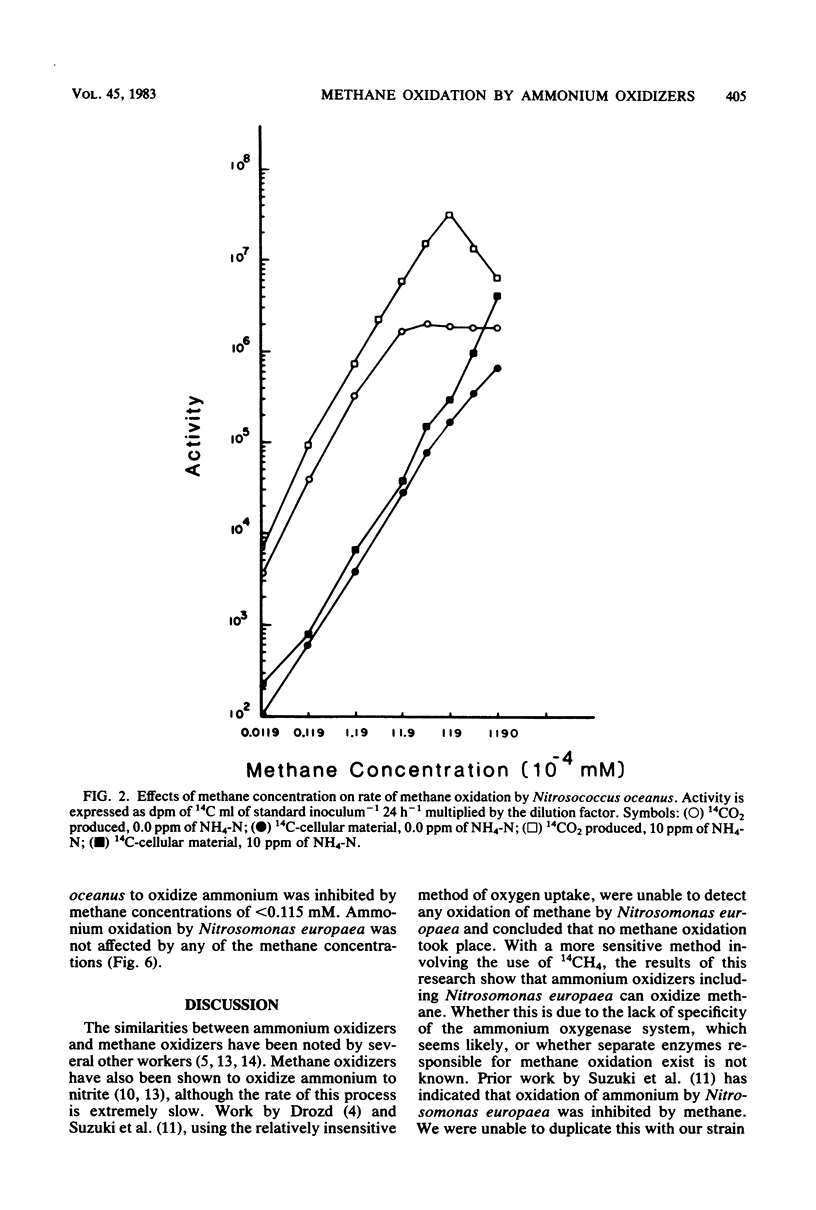
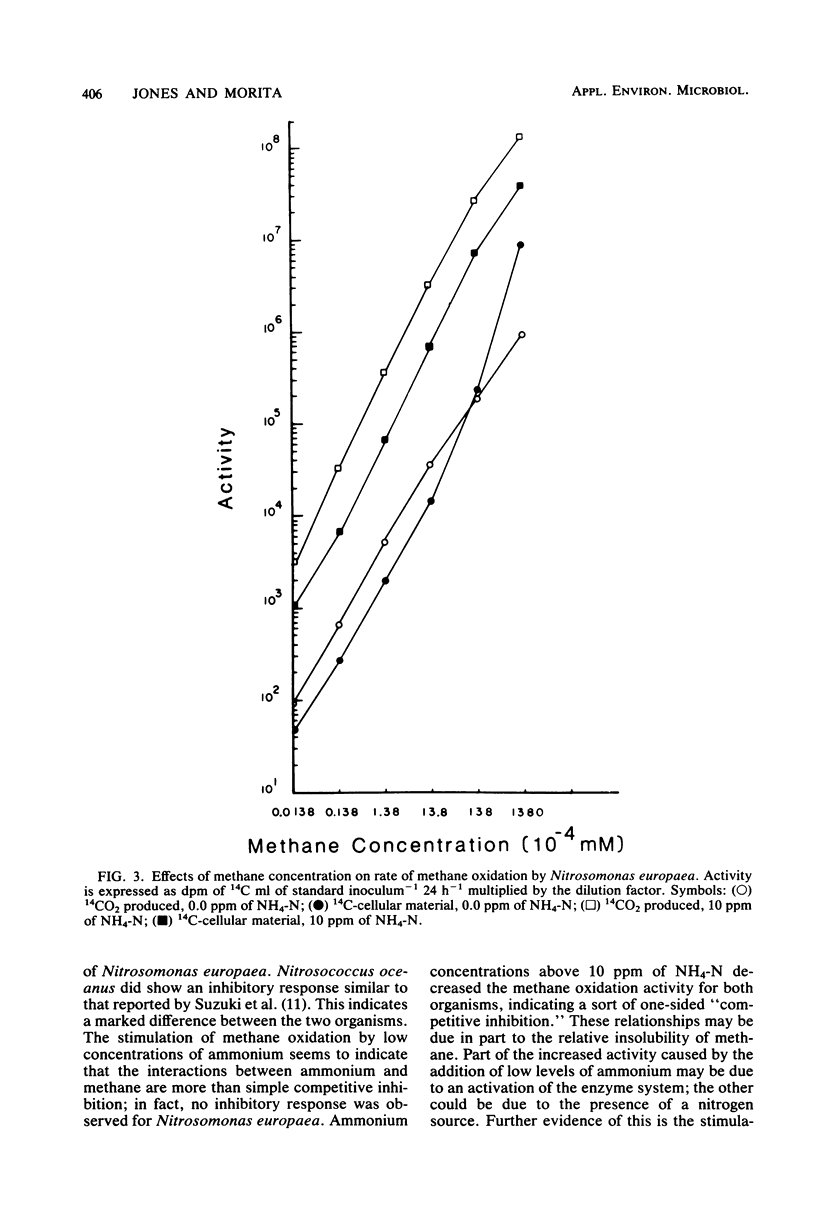
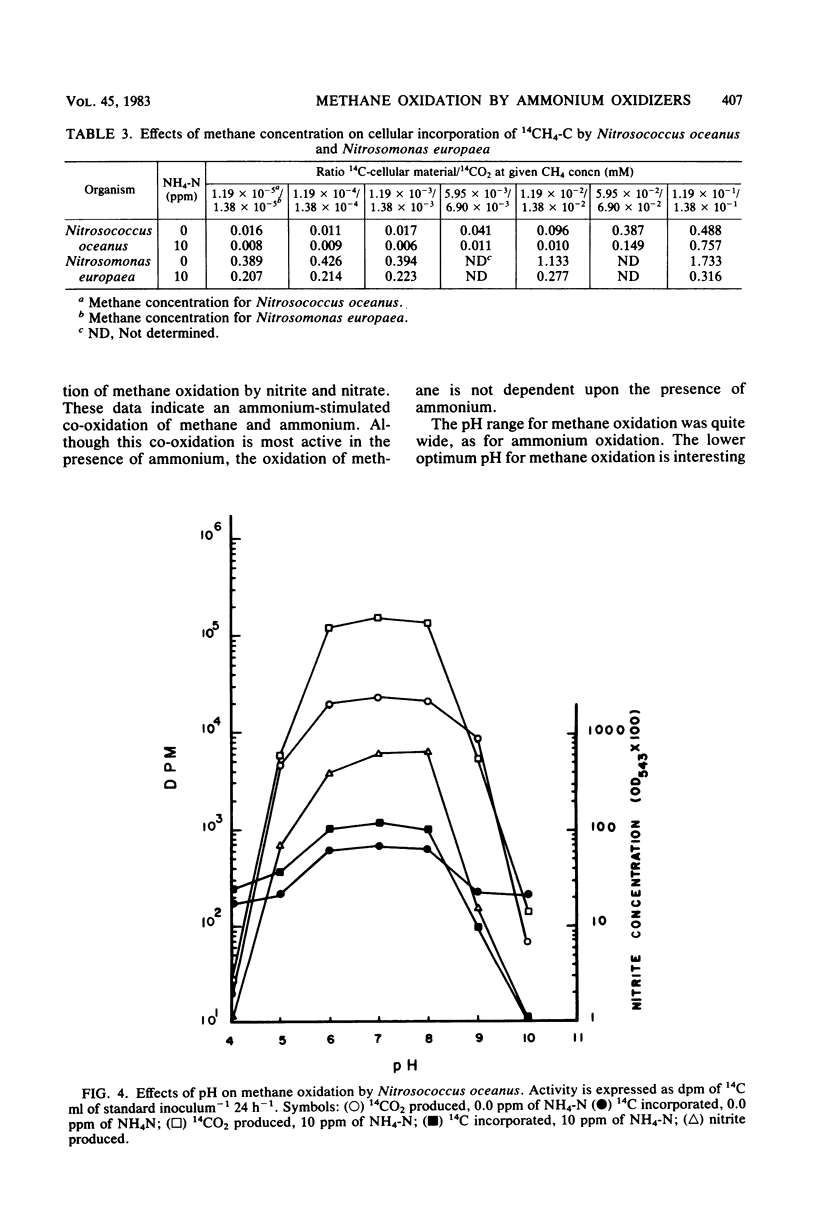
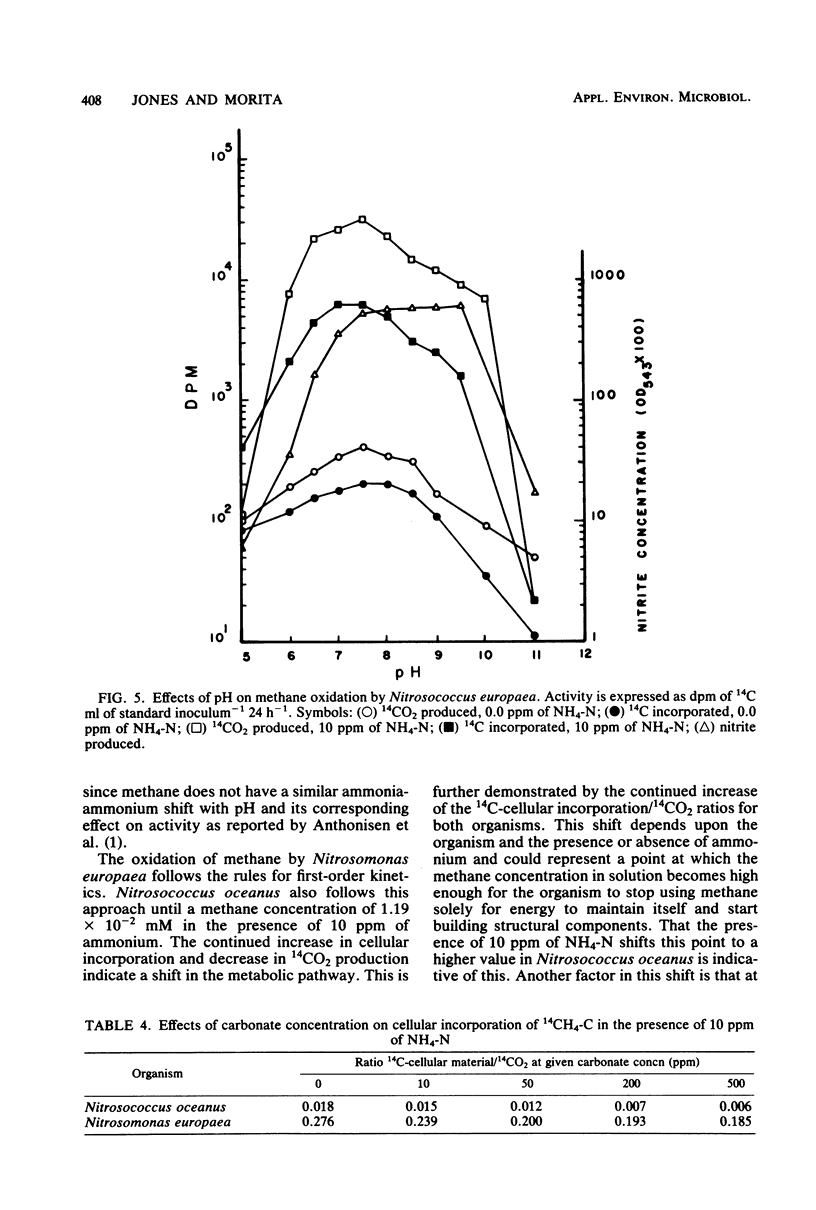
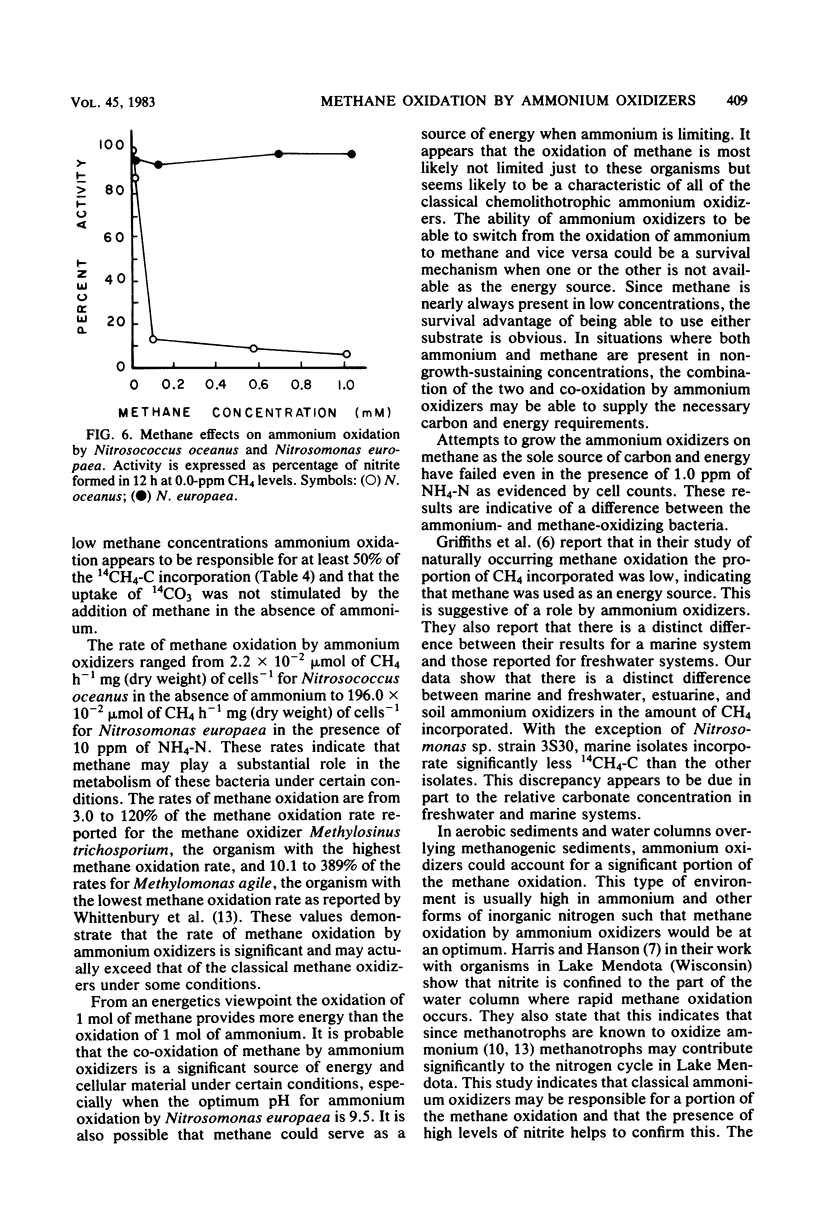
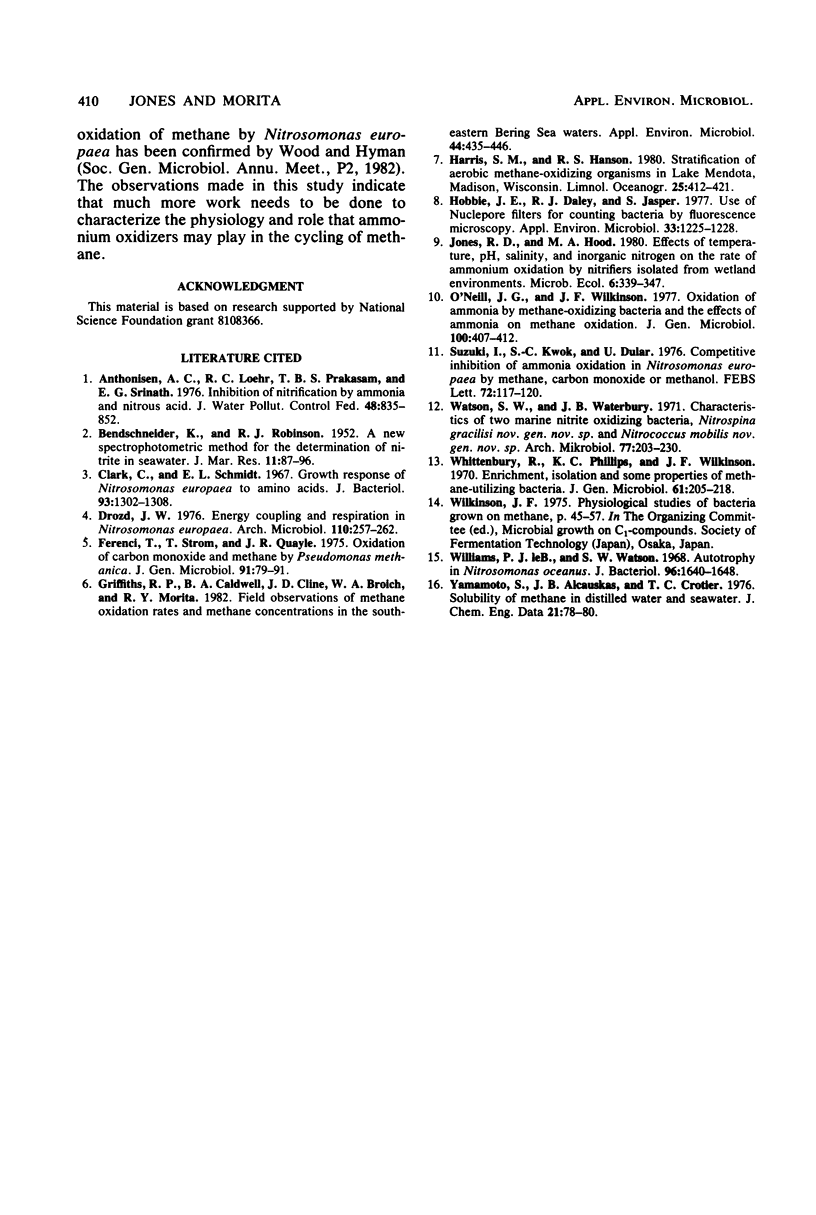
Selected References
These references are in PubMed. This may not be the complete list of references from this article.
- Anthonisen A. C., Loehr R. C., Prakasam T. B., Srinath E. G. Inhibition of nitrification by ammonia and nitrous acid. J Water Pollut Control Fed. 1976 May;48(5):835–852. [PubMed] [Google Scholar]
- Clark C., Schmidt E. L. Growth response of Nitrosomonas europaea to amino acids. J Bacteriol. 1967 Apr;93(4):1302–1308. doi: 10.1128/jb.93.4.1302-1308.1967. [DOI] [PMC free article] [PubMed] [Google Scholar]
- Drozd J. W. Energy coupling and respiration in Nitrosomonas europaea. Arch Microbiol. 1976 Nov 2;110(23):257–262. doi: 10.1007/BF00690236. [DOI] [PubMed] [Google Scholar]
- Ferenci T., Strom T., Quayle J. R. Oxidation of carbon monoxide and methane by Pseudomonas methanica. J Gen Microbiol. 1975 Nov;91(1):79–91. doi: 10.1099/00221287-91-1-79. [DOI] [PubMed] [Google Scholar]
- Griffiths R. P., Caldwell B. A., Cline J. D., Broich W. A., Morita R. Y. Field observations of methane concentrations and oxidation rates in the southeastern bering sea. Appl Environ Microbiol. 1982 Aug;44(2):435–446. doi: 10.1128/aem.44.2.435-446.1982. [DOI] [PMC free article] [PubMed] [Google Scholar]
- Hobbie J. E., Daley R. J., Jasper S. Use of nuclepore filters for counting bacteria by fluorescence microscopy. Appl Environ Microbiol. 1977 May;33(5):1225–1228. doi: 10.1128/aem.33.5.1225-1228.1977. [DOI] [PMC free article] [PubMed] [Google Scholar]
- Suzuki I., Kwok S. C., Dular U. Competitive inhibition of ammonia oxidation in Nitrosomonas europaea by methane, carbon monoxide or methanol. FEBS Lett. 1976 Dec 15;72(1):117–120. doi: 10.1016/0014-5793(76)80825-3. [DOI] [PubMed] [Google Scholar]
- Whittenbury R., Phillips K. C., Wilkinson J. F. Enrichment, isolation and some properties of methane-utilizing bacteria. J Gen Microbiol. 1970 May;61(2):205–218. doi: 10.1099/00221287-61-2-205. [DOI] [PubMed] [Google Scholar]
- Williams P. J., Watson S. W. Autotrophy in Nitrosocystis oceanus. J Bacteriol. 1968 Nov;96(5):1640–1648. doi: 10.1128/jb.96.5.1640-1648.1968. [DOI] [PMC free article] [PubMed] [Google Scholar]


